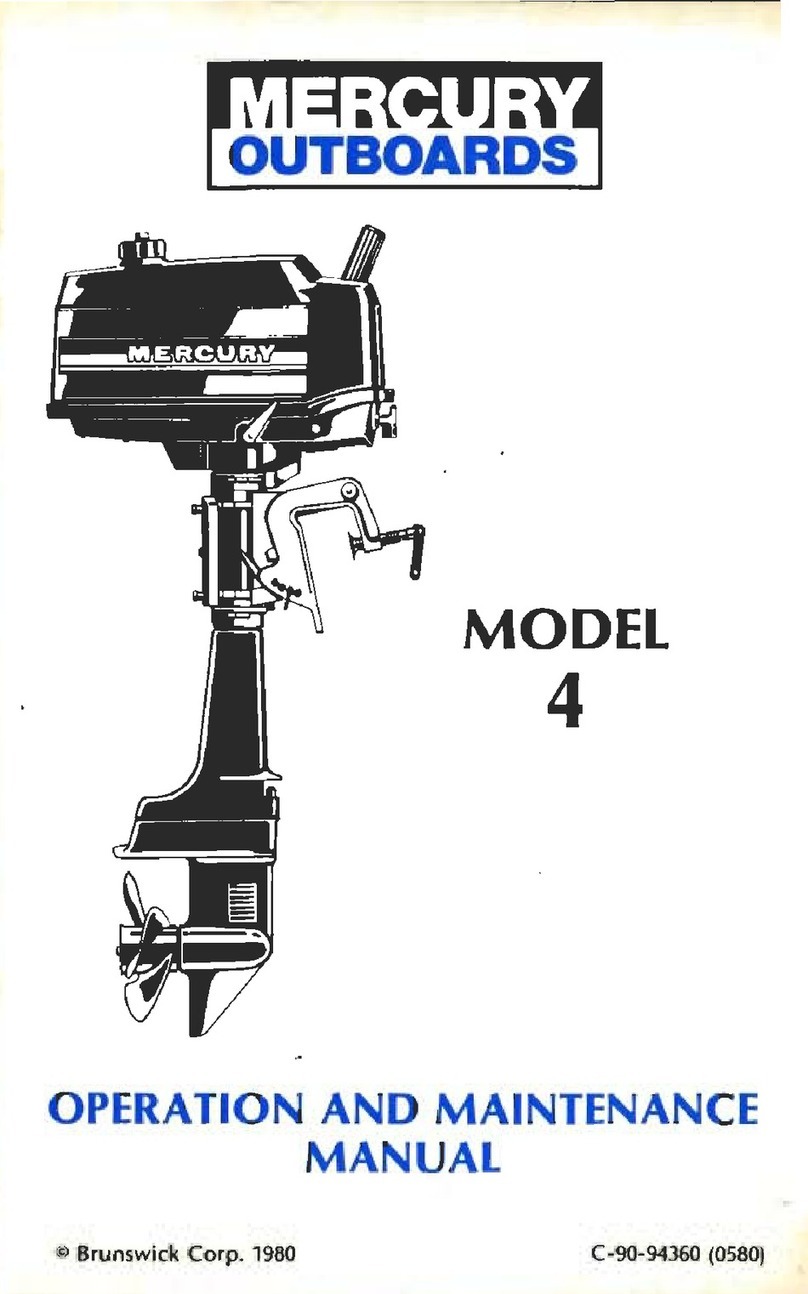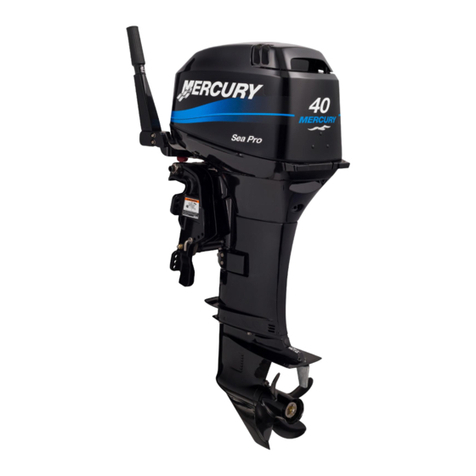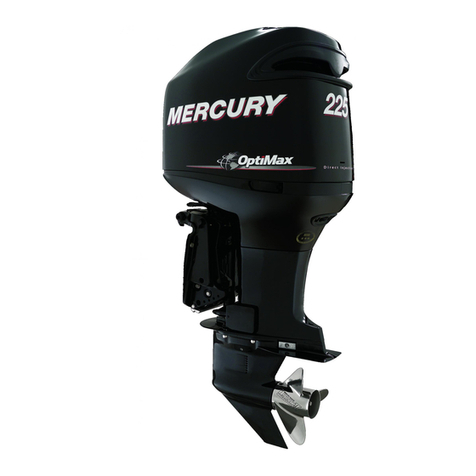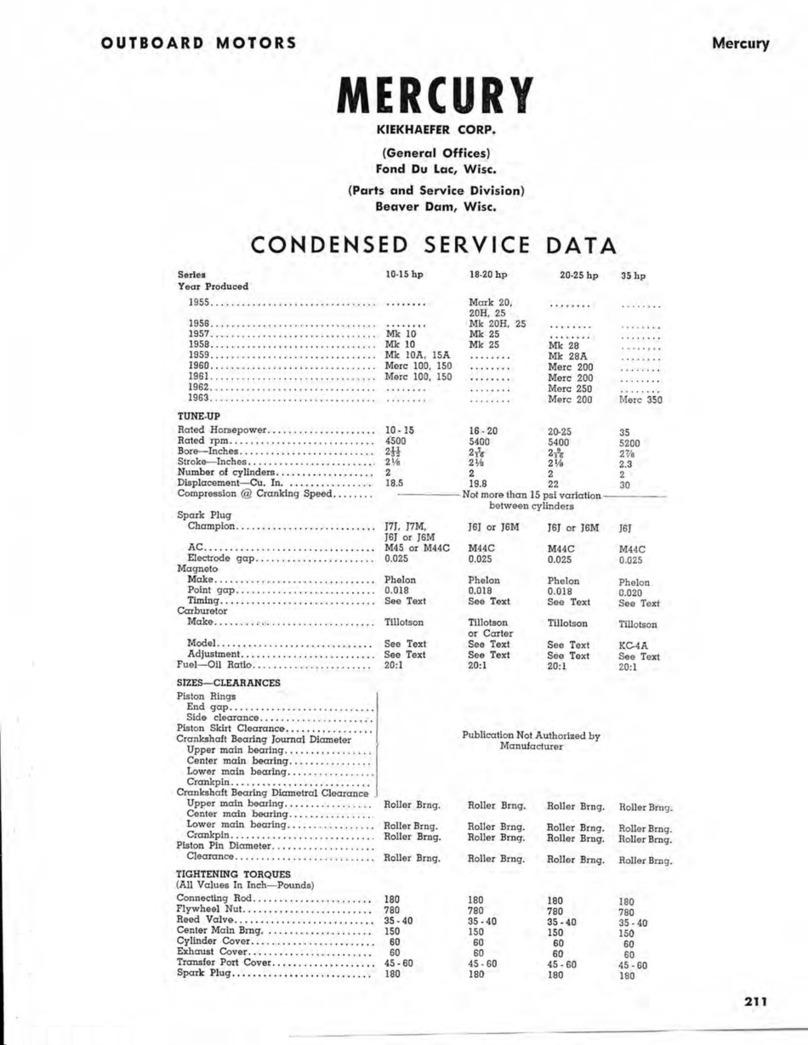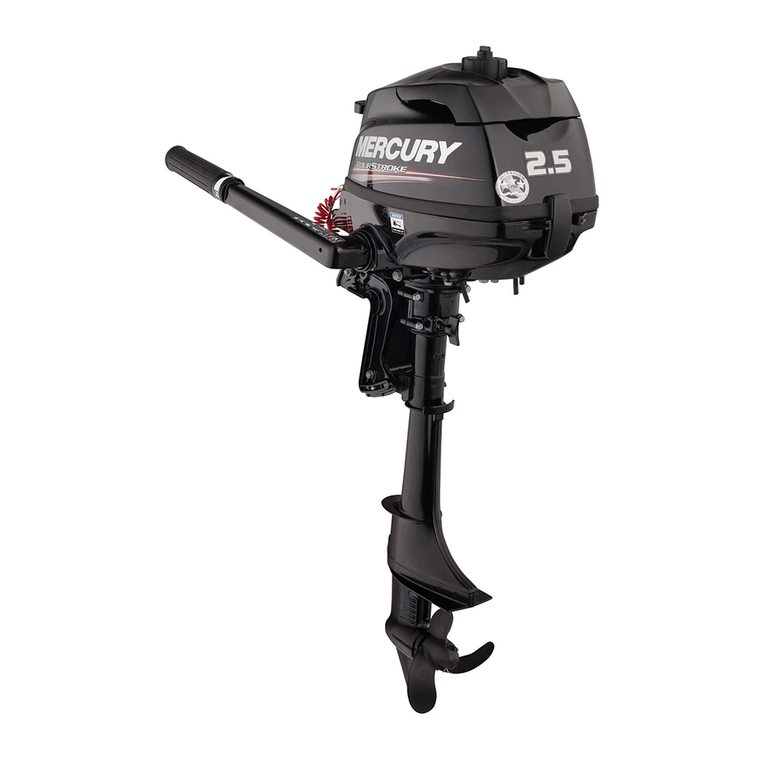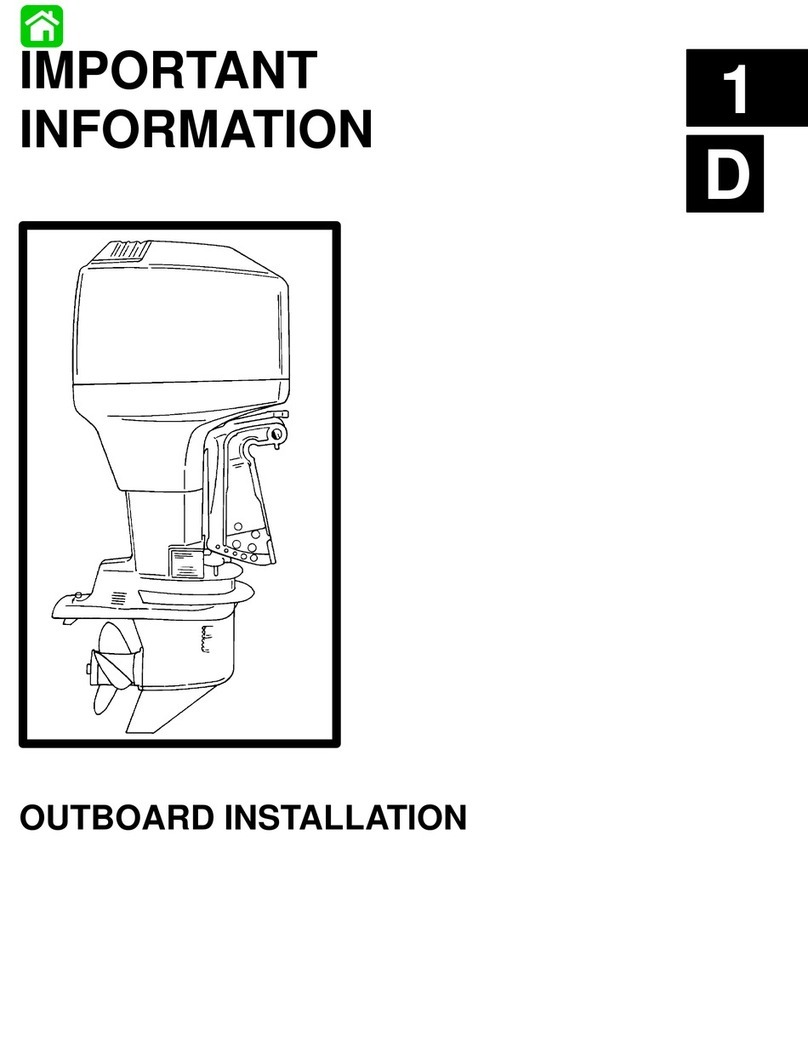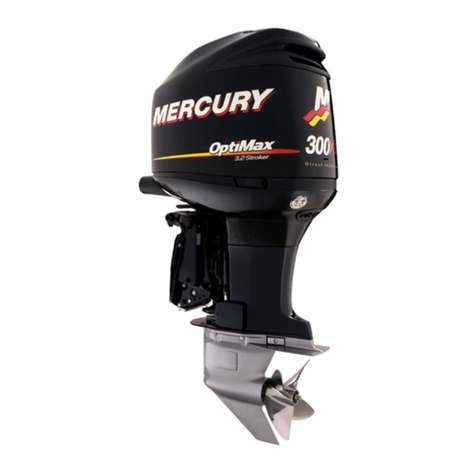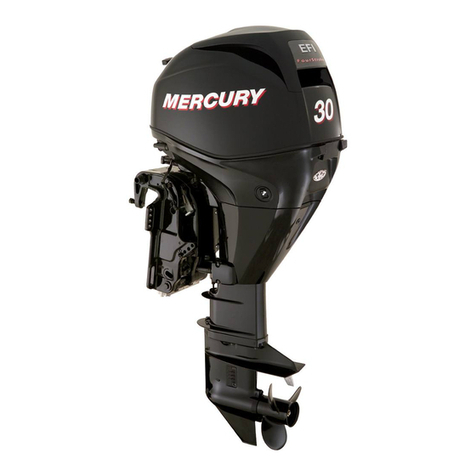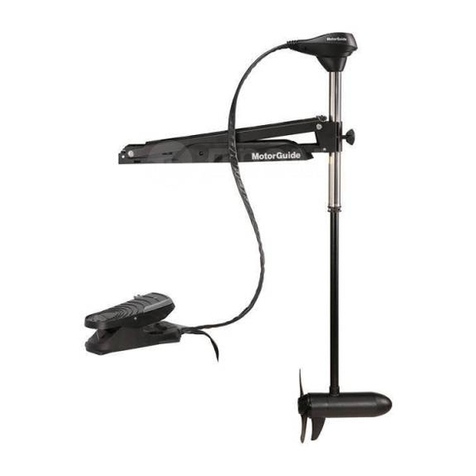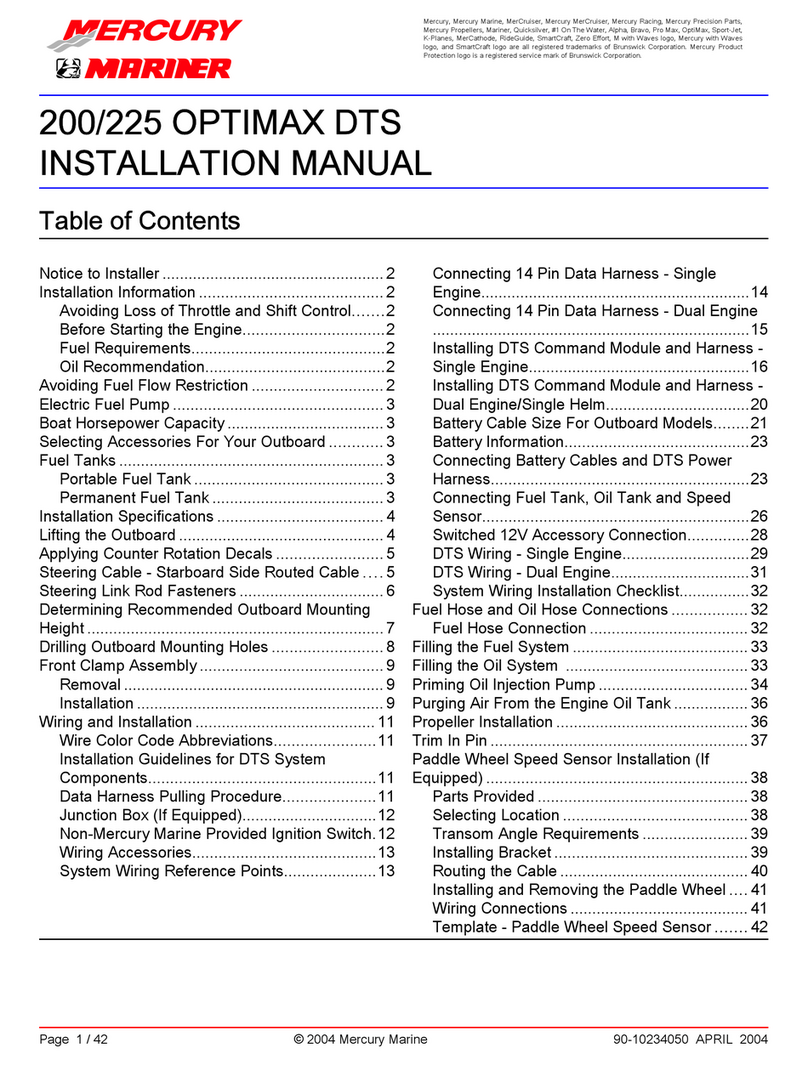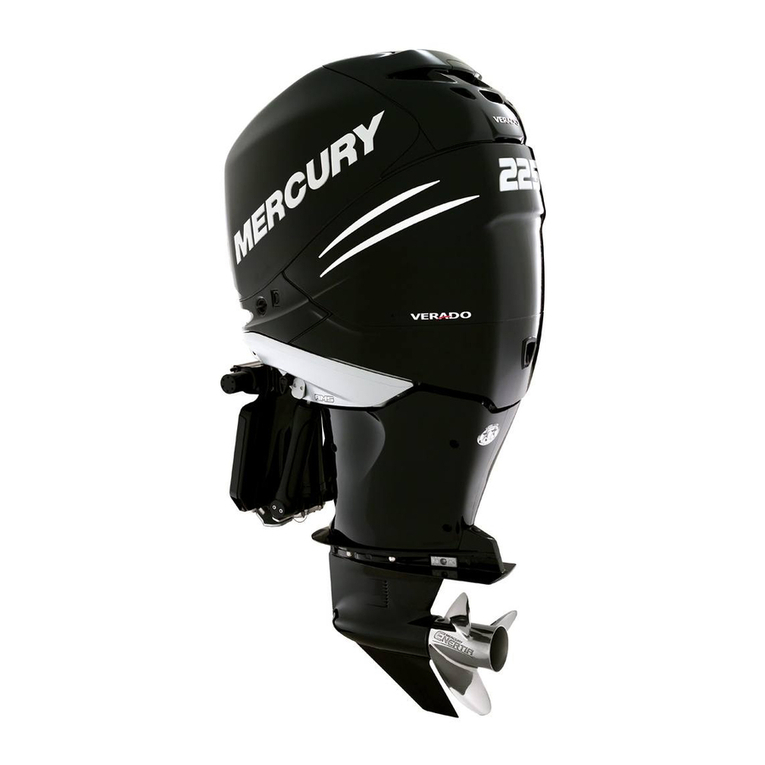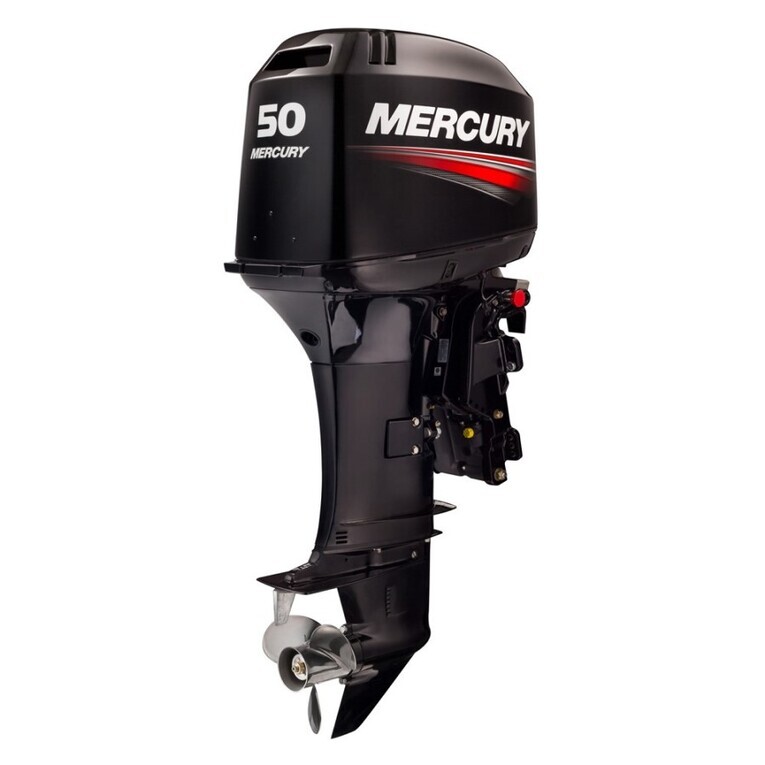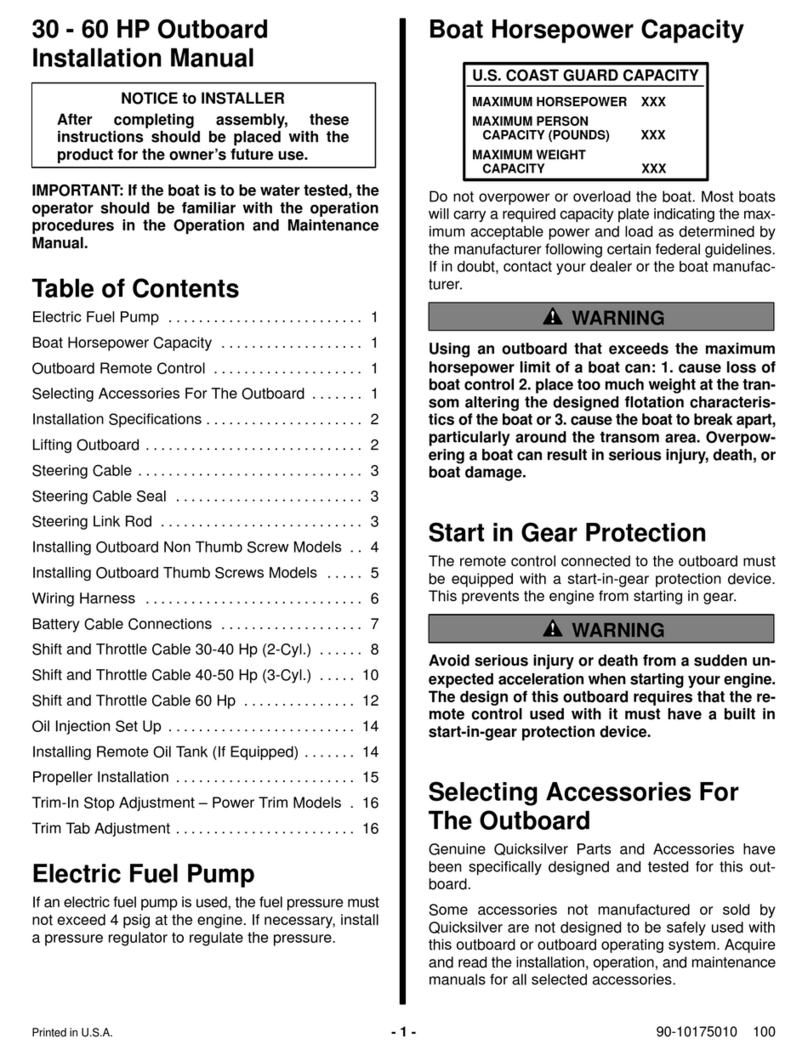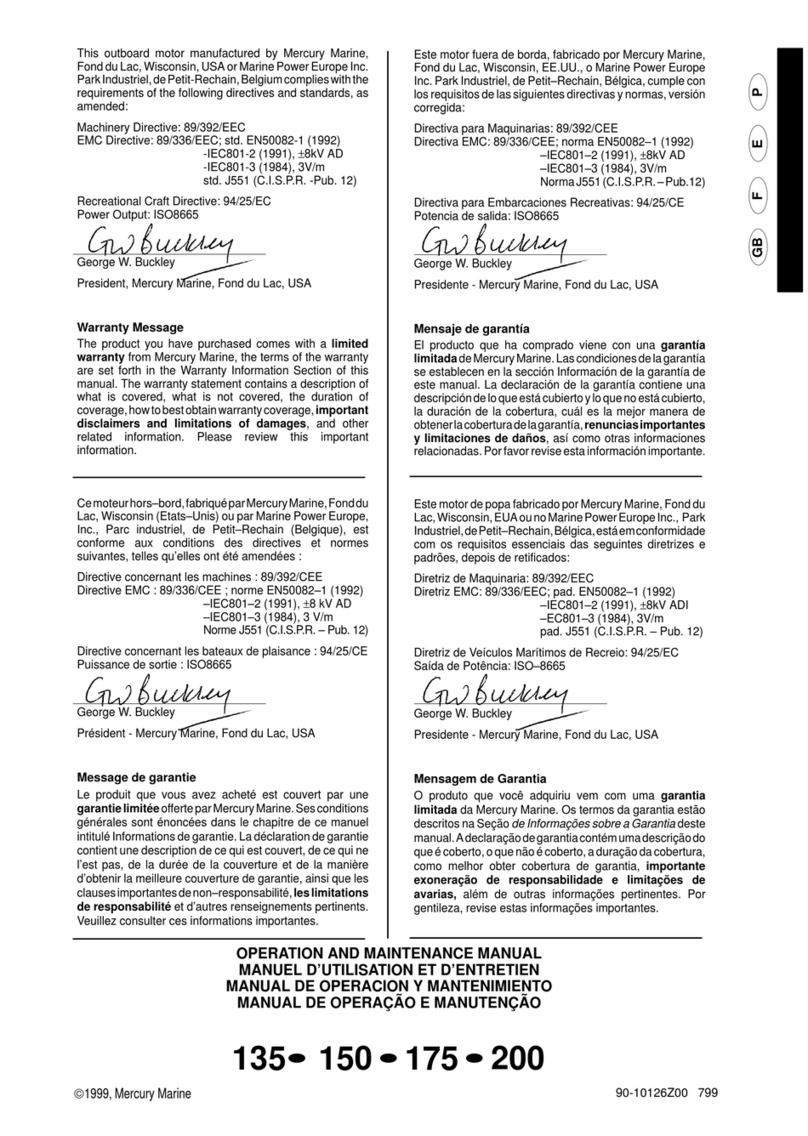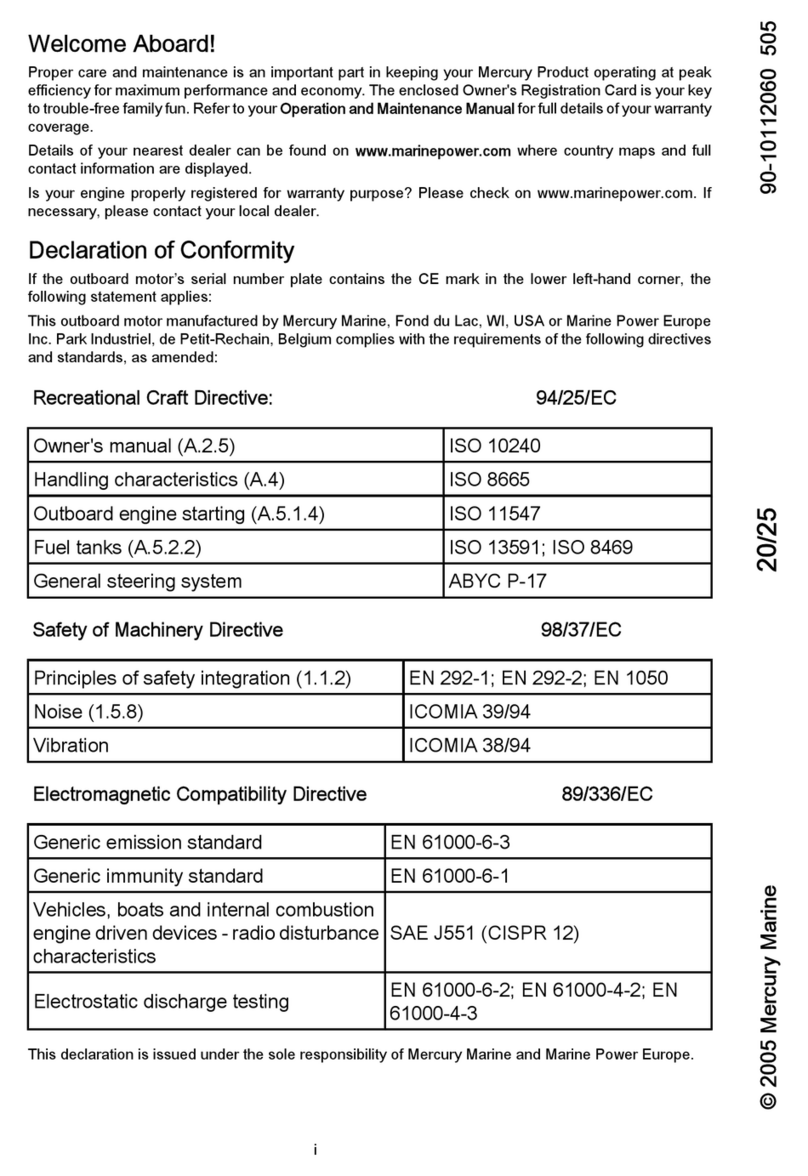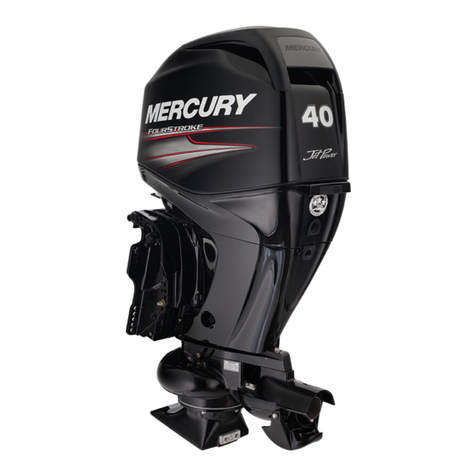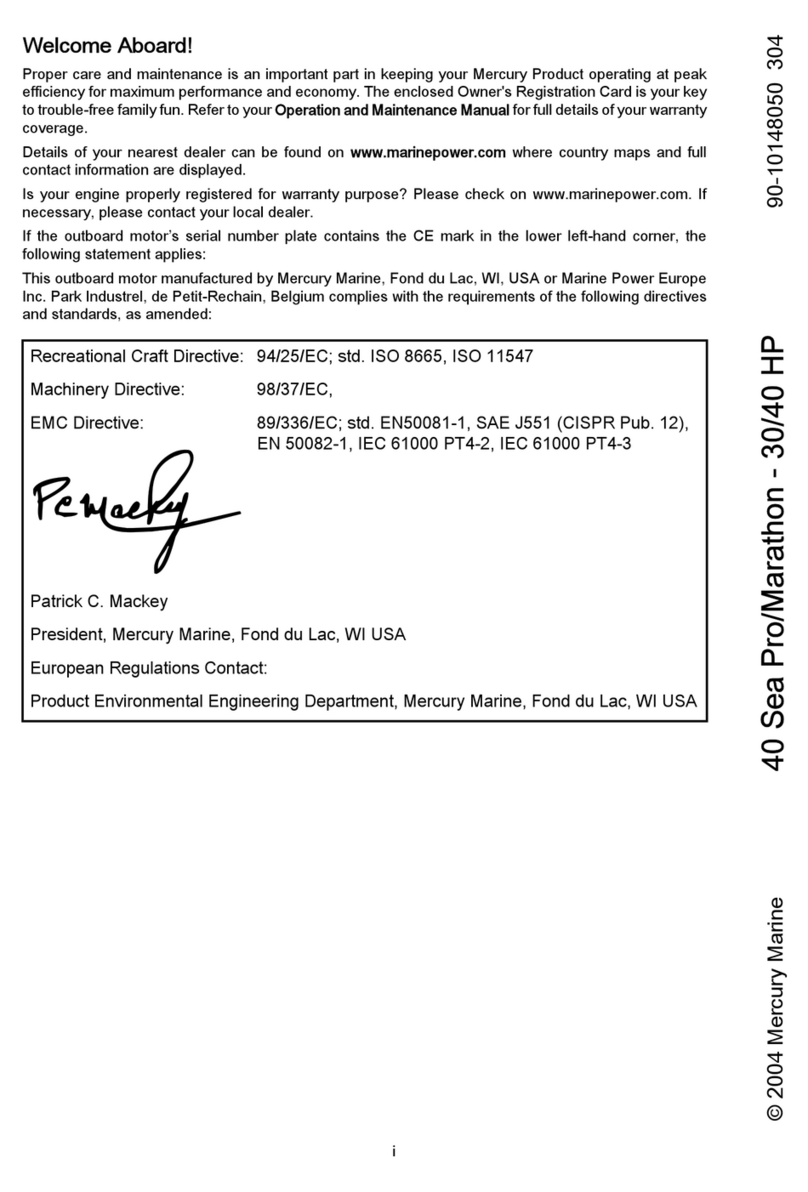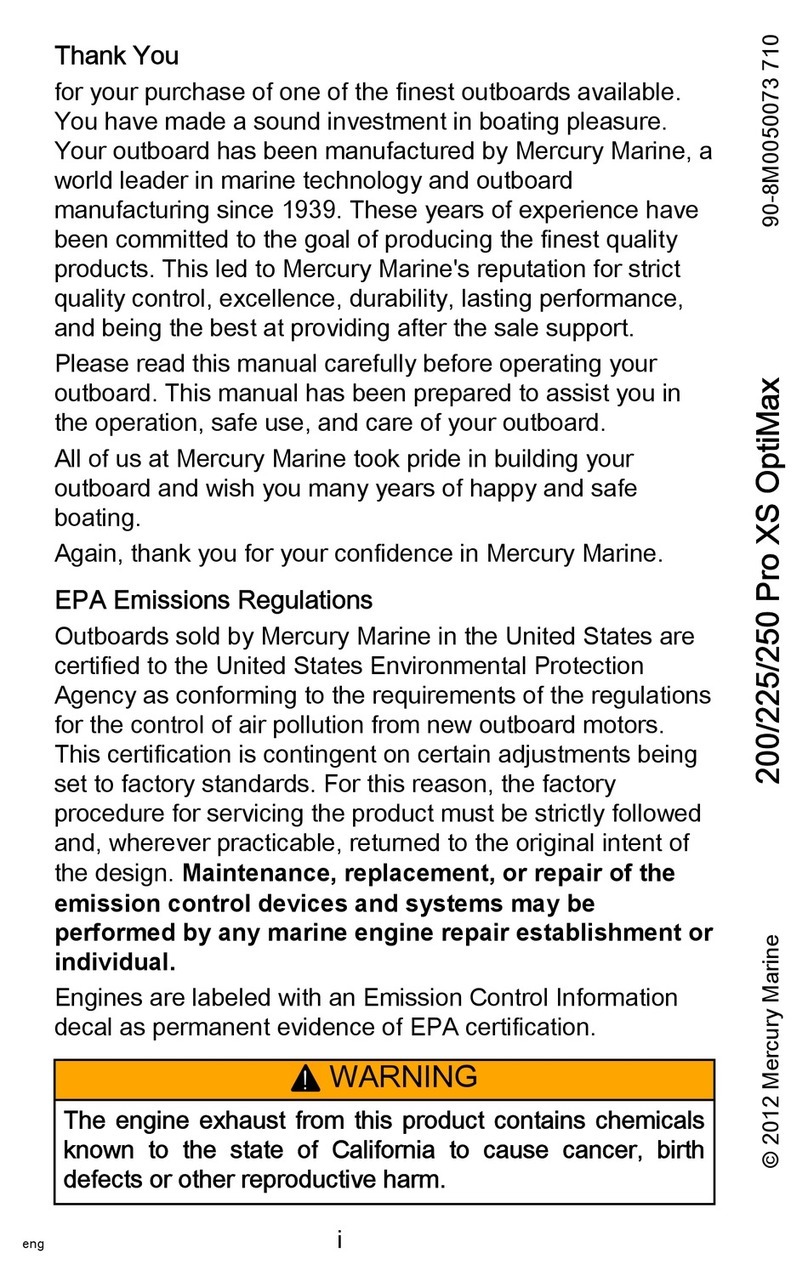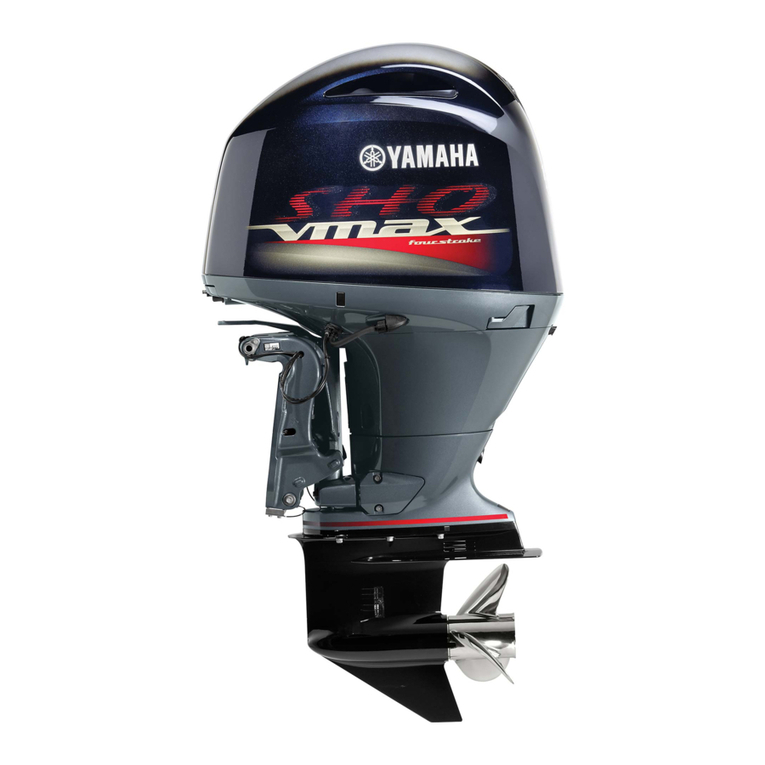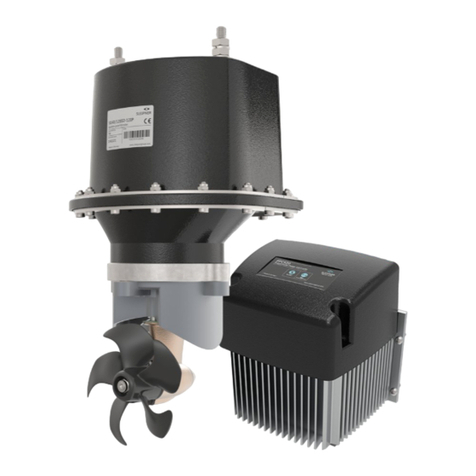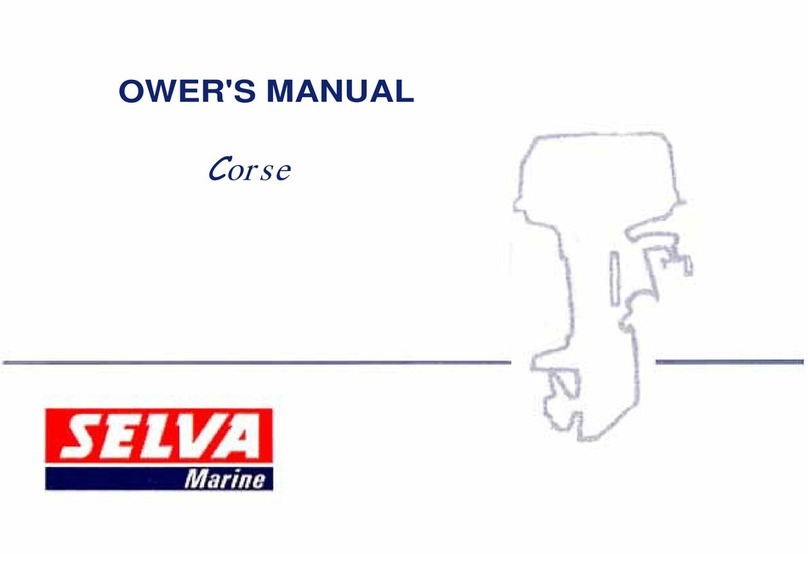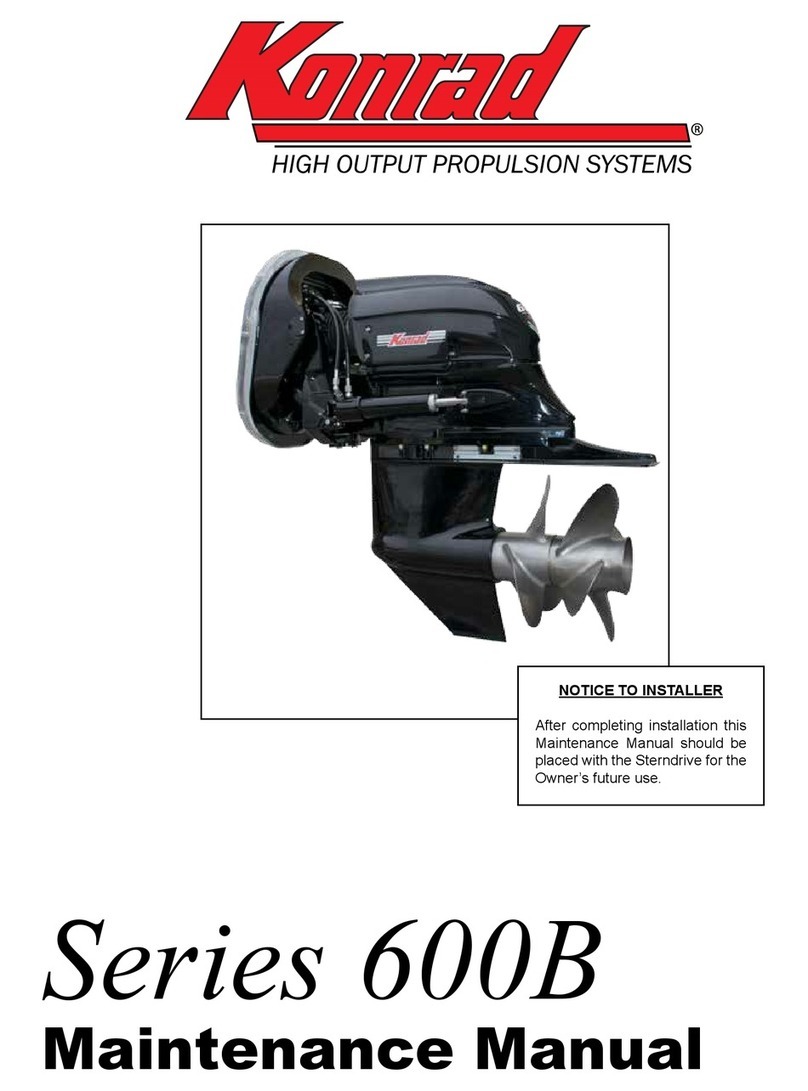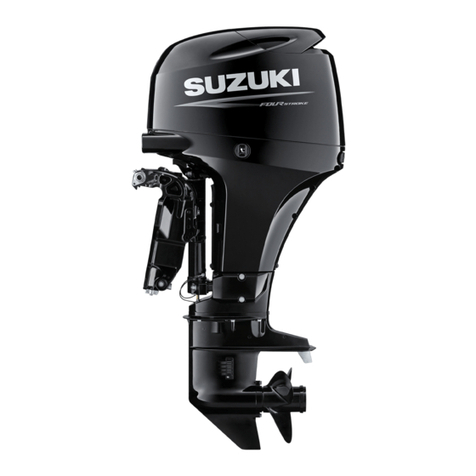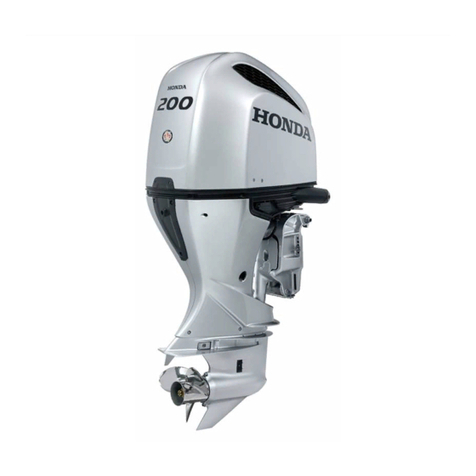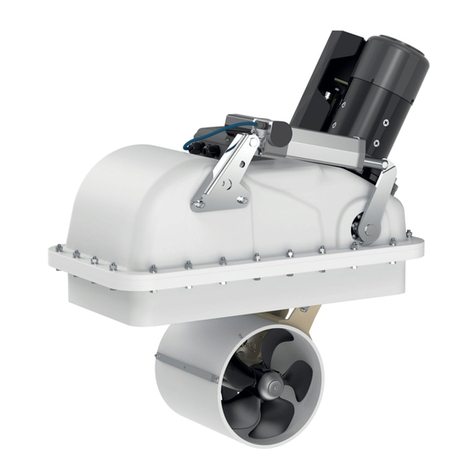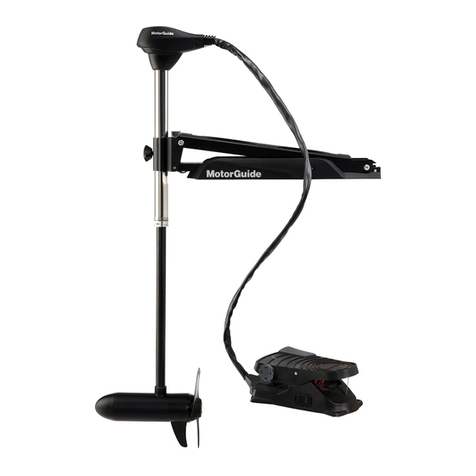8
GENERAL INFORMATION
Lanyard Stop Switch (Continued)
Read the following Safety Information before proceeding.
Important Safety Information: The purpose of a lanyard stop
switch is to stop the engine when the operator moves far enough
away from the operator’s position to activate the switch. This would
occur if the operator accidentally falls overboard or moves within the
boat a sufficient distance from the operator’s position. Accidental
ejections and falls overboard are more likely to occur in certain types
of boats such as low sided inflatables or bass boats, high-perfor-
mance boats and light, sensitive-handling fishing boats operated by
hand-tiller. Accidental ejections and falls overboard are also likely to
occur as a result of poor operating practices such as sitting on the
back of the seat or gunwale at planing speeds, standing at planing
speeds, sitting on elevated fishing boat decks, operating at planing
speeds in shallow or obstacle-infested waters, releasing your grip on
a steering wheel or tiller handle that is pulling in one direction, drink-
ing alcohol or consuming drugs, or daring, high-speed boat maneu-
vers.
While activation of the lanyard stop switch will stop the engine im-
mediately, a boat will continue to coast for some distance depending
upon the velocity and degree of any turn at shut-down. However, the
boat will not complete a full circle. While the boat is coasting, it can
cause injury to anyone in the boat’s path as seriously as the boat
would when under power.
We strongly recommend that other occupants be instructed on prop-
er starting and operating procedures should they be required to oper-
ate the engine in an emergency (e.g. if the operator is accidentally
ejected).
!WARNING
Should the operator fall out of the boat, the possibility of
serious injury or death from being run over by the boat
can be greatly reduced by stopping the engine immediate-
ly. Always properly connect both ends of the stop switch
lanyard – to the stop switch and the operator.
(continued on next page)
